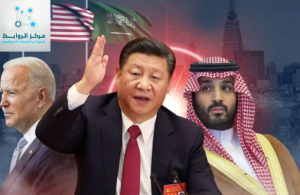The Gulf region has historically served as a focal point of economic opportunity and geopolitical competition, making it a critical battleground in the ongoing struggle for global influence between the United States and China. This article explores how Cold War legacies and evolving economic dynamics have shaped the Gulf’s role in the broader U.S.-China rivalry, focusing on recent developments and future implications.
Cold War Legacies and Contemporary Realities
During the Cold War, the Gulf emerged as a key arena for Soviet-American competition, leaving lasting conflicts and tensions. With the Cold War’s end, China has risen as a significant economic player, shifting the region’s focus from ideological conflict to economic expansion.
China’s Economic Ascendance in the Gulf
China has pursued a pragmatic economic strategy in the Gulf, investing heavily and forging trade partnerships across the Middle East and strategic zones like the South China Sea. This approach has enhanced China’s global stature while intensifying competition with the United States.
U.S.-China Competition in the Gulf
The United States, traditionally dominant in Gulf affairs, has responded to China’s growing influence with caution and skepticism. American concerns over Chinese investments and infrastructure projects reflect fears of undermining strategic interests and regional alliances.
Strategic Calculations of Gulf States
Gulf Arab countries face a delicate balancing act between economic ties with China and longstanding security alliances with the United States. While economic benefits draw Gulf states closer to China, they remain wary of jeopardizing military cooperation with Washington.
China’s Non-Interference Policy
China’s foreign policy in the Gulf contrasts sharply with Western interventions, prioritizing non-interference and economic partnerships over ideological alignment. This approach has enabled China to cultivate flexible diplomatic relations across the region.
U.S. Concerns and Diplomatic Responses
The United States has expressed growing concerns about China’s expanding Gulf influence, cautioning Gulf allies against potential risks associated with deepening economic ties with Beijing. Diplomatic warnings underscore strategic costs of closer alignment with China.
Future Implications and Strategic Choices
Looking forward, the Gulf region faces critical decisions in navigating U.S.-China rivalry while promoting economic development and regional stability. Balancing economic diversification with security imperatives will demand careful diplomacy and foresight from Gulf leaders.
Additional Economic Insights
The bilateral trade between Saudi Arabia and China surged by 39% annually in 2021, reaching approximately 309 billion riyals. Saudi exports to China totaled 192 billion riyals, including 41 billion riyals from non-oil exports. Saudi investments in China amounted to 8.6 billion riyals, solidifying Saudi Arabia’s position as a significant investor in China by the end of 2019.That means the bilateral Trade Surge: The bilateral trade between Saudi Arabia and China increased by 39% annually in 2021. This means that the total value of goods and services traded between the two countries grew significantly compared to the previous year.
Total Saudi Exports to China: Saudi Arabia exported goods and services worth a total of 192 billion riyals to China in 2021. This includes 41 billion riyals from non-oil exports, indicating that Saudi Arabia’s exports to China are not solely dependent on oil.
Saudi Investments in China: Saudi Arabia’s investments in China amounted to 8.6 billion riyals by the end of 2019. This highlights Saudi Arabia’s role as a substantial investor in China’s economy, contributing to economic ties and bilateral relations between the two nations.
In conclusion, the Gulf region stands at a crossroads of geopolitical competition and economic opportunity, shaped by intersecting interests of major global powers. As China expands its economic footprint and the United States asserts strategic influence, Gulf states must navigate these dynamics with caution. By leveraging economic partnerships while safeguarding alliances, the Gulf can chart a path towards sustainable development amidst the complexities of global power rivalry.
Economic Studies Unit / North America Office
Rawabet Center for Research and Strategic Studie

